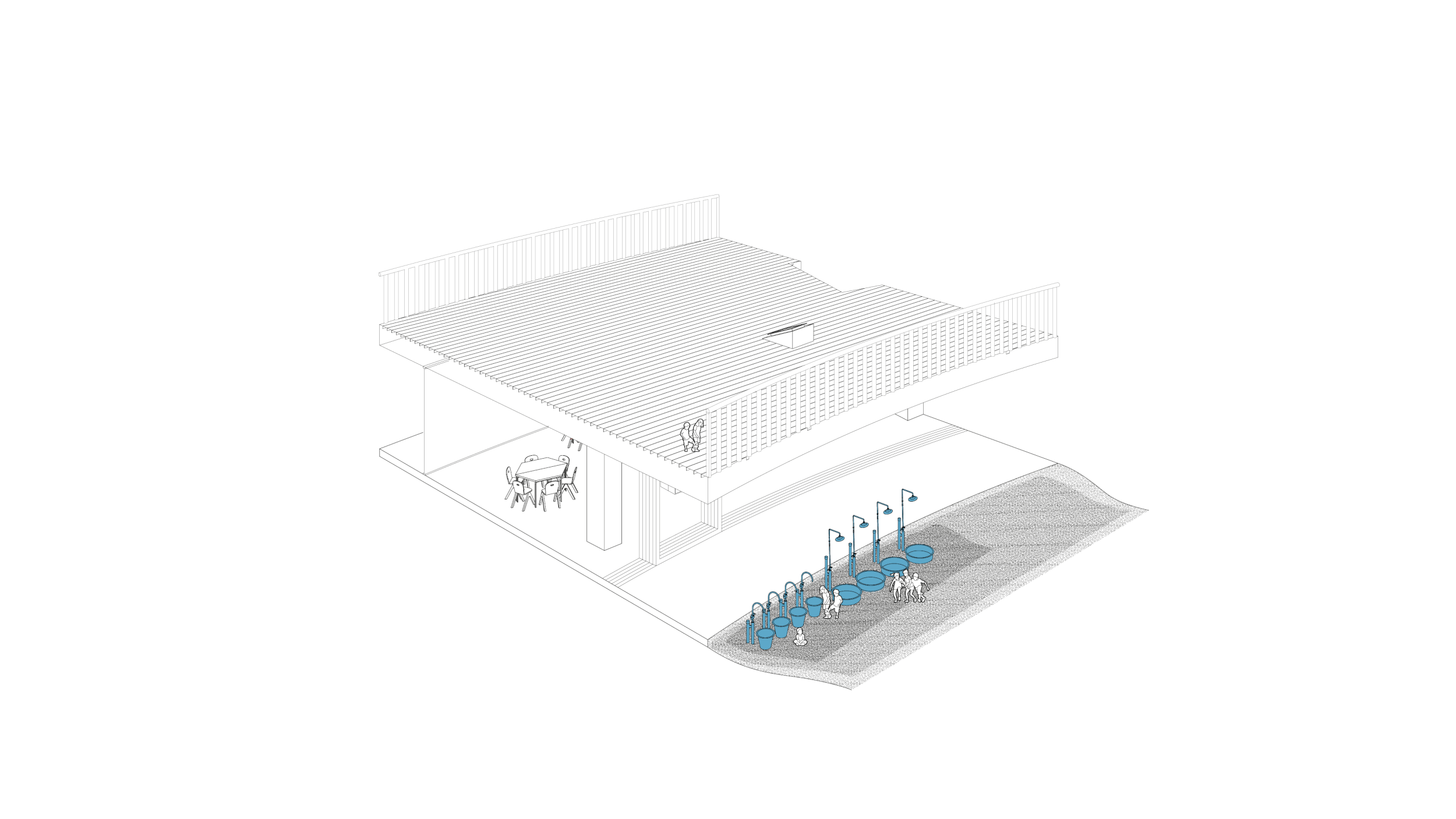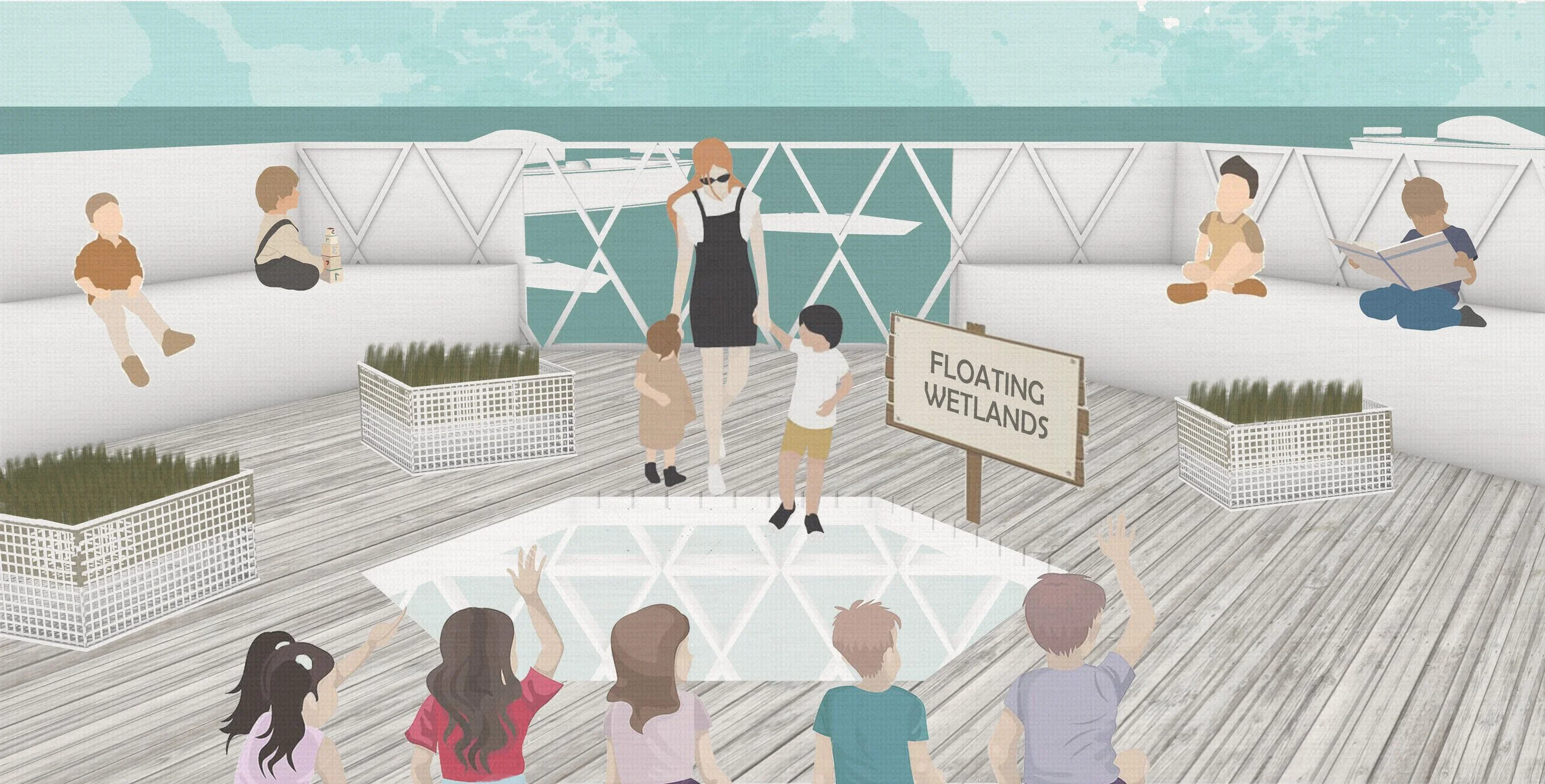BEACH EXPLORATORIUM
Mastic Beach is affected by superstorm Sandy and many other environmental hazards, with the absence of beach as its central issue to be treated. The importance of maintaining ecological education and awareness has been highlighted by the community inhabiting the place, who develop different activities to preserve the engagement. The Exploratorium introduces a new model of learning and preserving ecology at the same time through hands-on experience, having children as the main users. By implementing the binary of permanent and temporary design elements, the proposal focuses on designing the experience on the boardwalk by aligning existing landscape elements: native vegetation and marshes, mounds, and water. In addition, this architectural element is adapted to the different seasons providing flexibility for the area’s activities and conditions and future expansion to adjacent zones.
Project Type: Student Work at Columbia GSAPP
Team: Michelle Clara, Jenifer Tello
Faculty: Tei Carpenter
Project featured in Columbia GSAPP End of Year Show

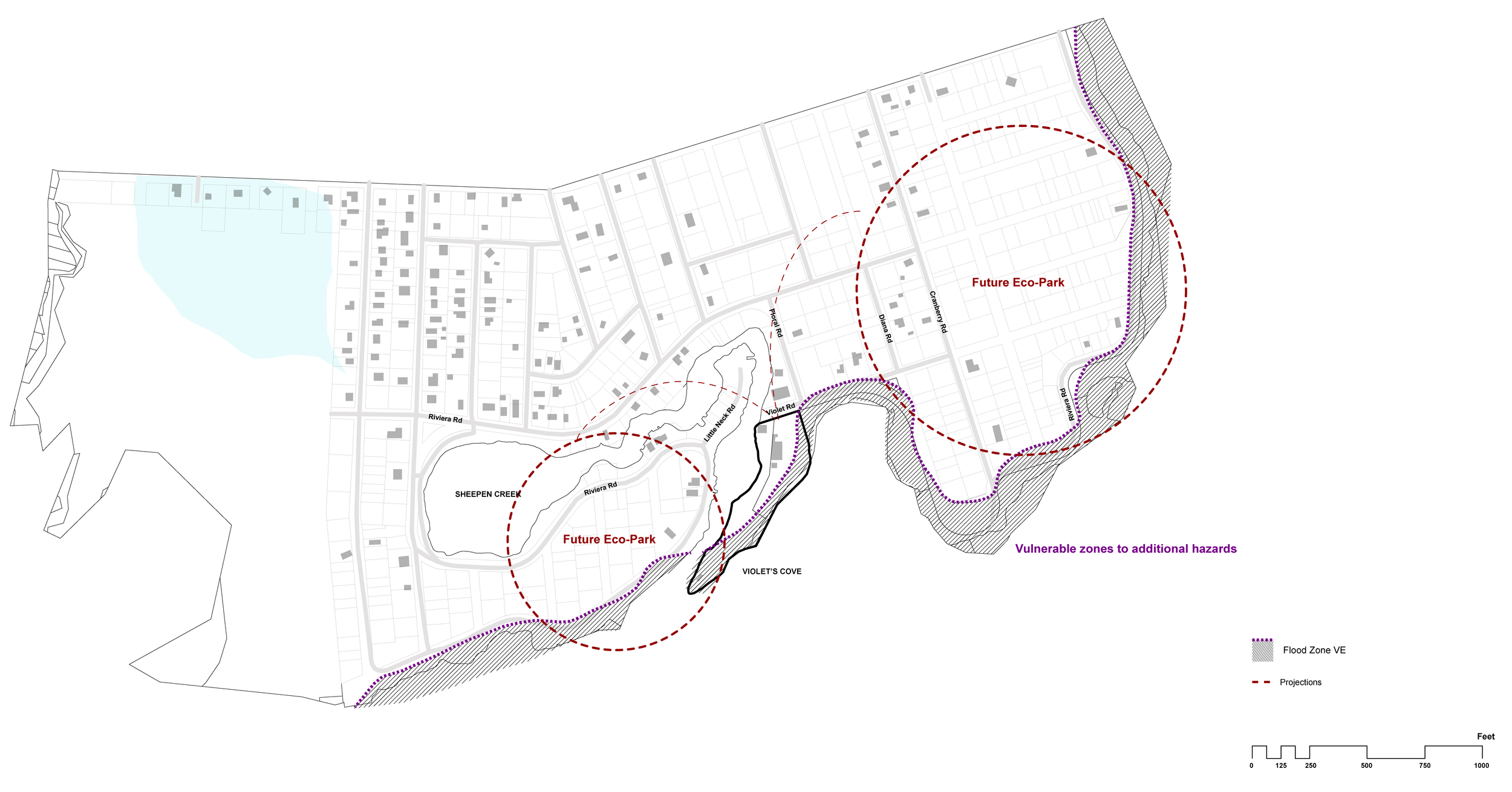

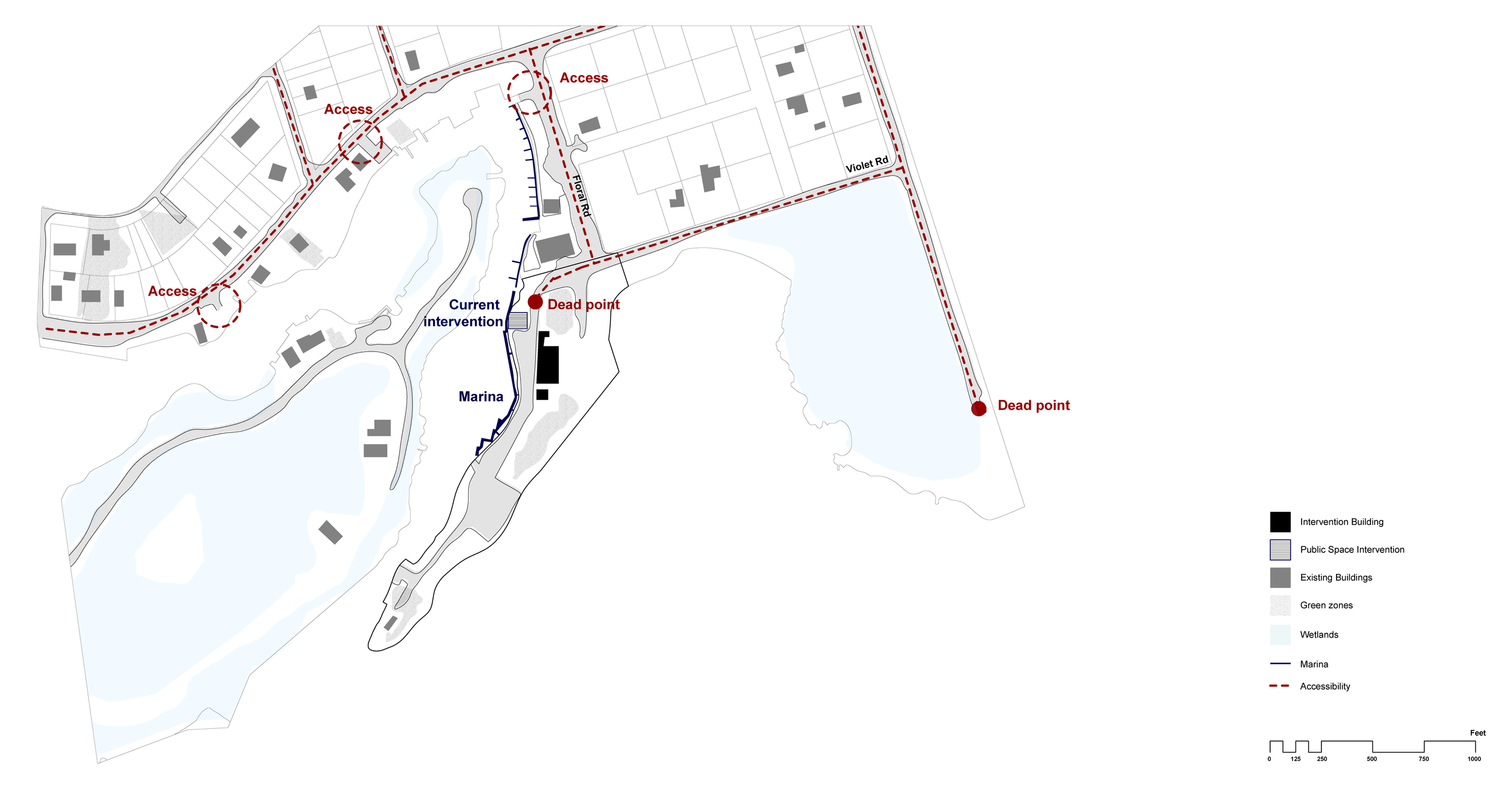

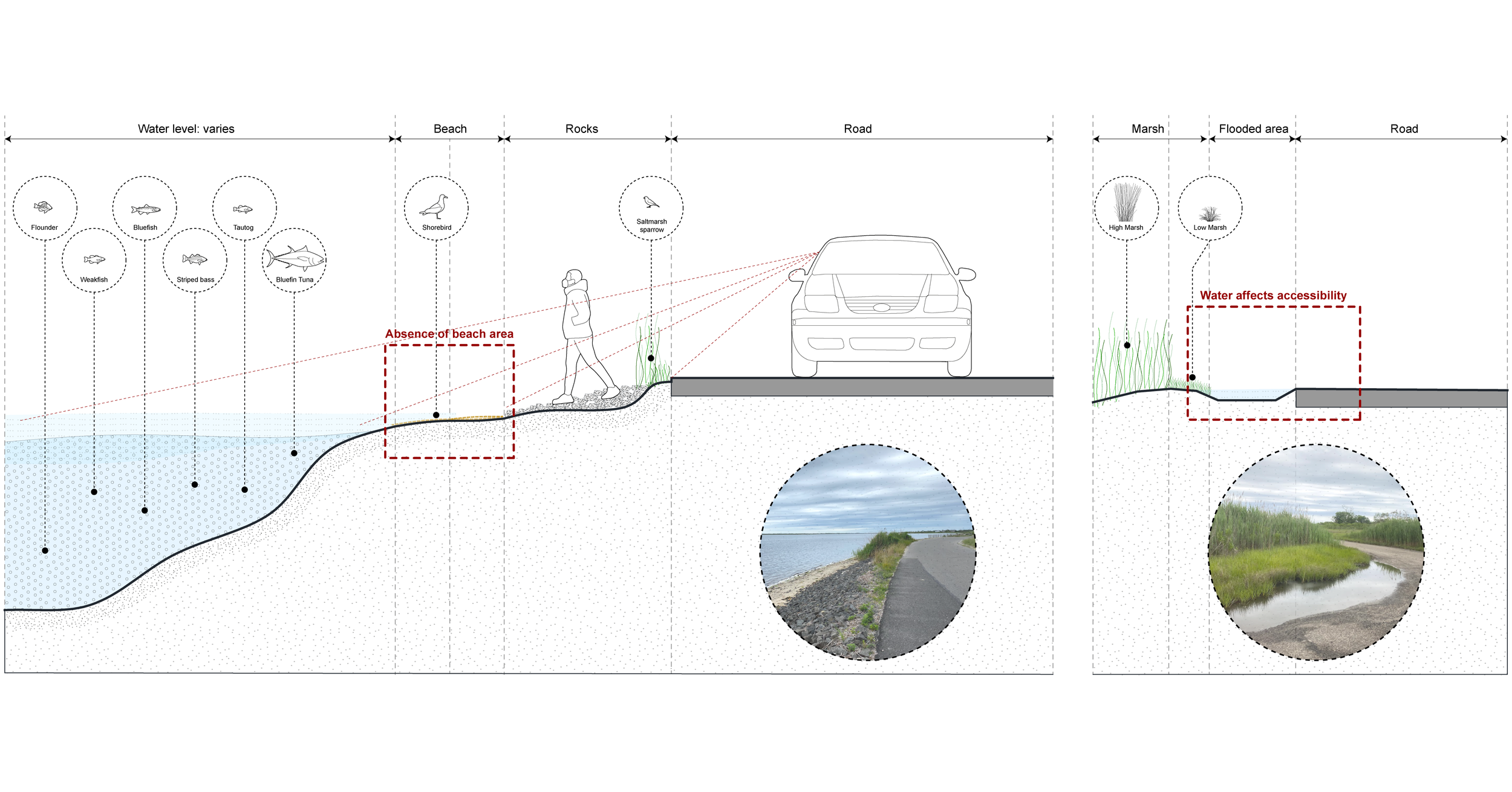
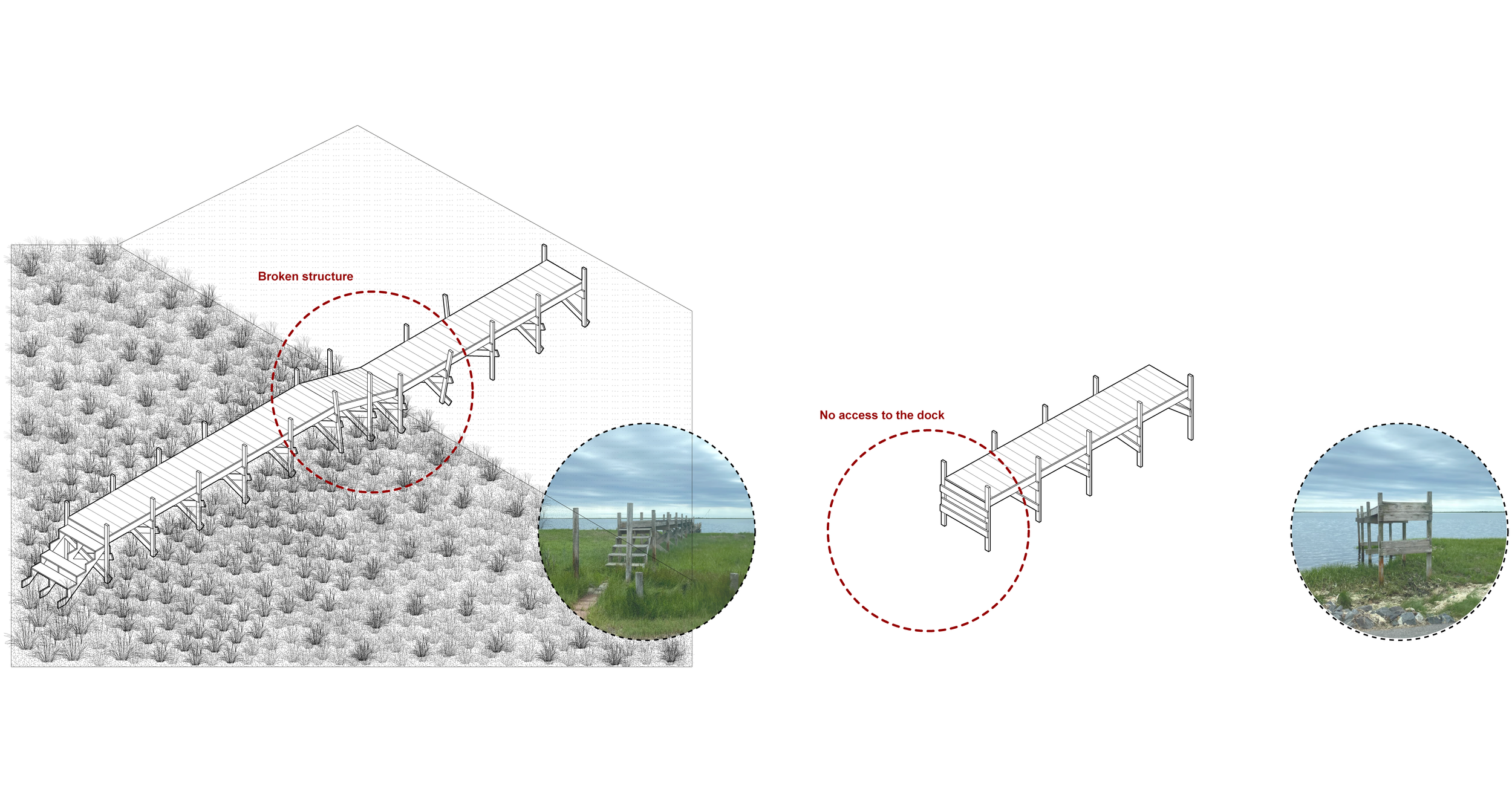

Case Studies
For the ground case study, we explored the Riverbed exhibition by Oliafur Eliasson in 2014 in the Louisiana Museum of Modern Art. This exhibition takes over the idea of blurring the boundaries between the natural world and the man-made in one wide sweeping gesture.
Next, we studied lagoons as our water-based typology, which are created by natural barriers due the erosion of shorelines trapping water. What we could conclude through this study is the formation of these barriers for the protection of the habitats of fish and other organisms, regardless of its natural or artificial creation.
Lastly, we analyzed the pedagogical method based on forest schools, which promote outdoor education through the experimentation of the child with the natural environments to develop their confidence, independence, self-esteem and ecological appreciation. We looked at the design of Fuji Kindergarten by Tezuka Architects, in which the roles of architectural elements have an abstract concept of exploration and flexibility.
Model Study
After series of grounding research, we proceed with physical model study to develop the key items that would develop our proposal: protection, exploration and redefinition of architecture when it interacts with multiple actors on site.
Proposal
In response to the site condition and to provide an interactive environment for the children, our project equipped with some landscape strategies such as:
Beach Restoration as shoreline protection
Sculpted Mounds to both give protection and functionality in beach area
Pollinator Pathway Garden to accommodate the pollination activities by the monarch butterflies
Native Vegetations and Marshes being preserved on site as a media of education for children





